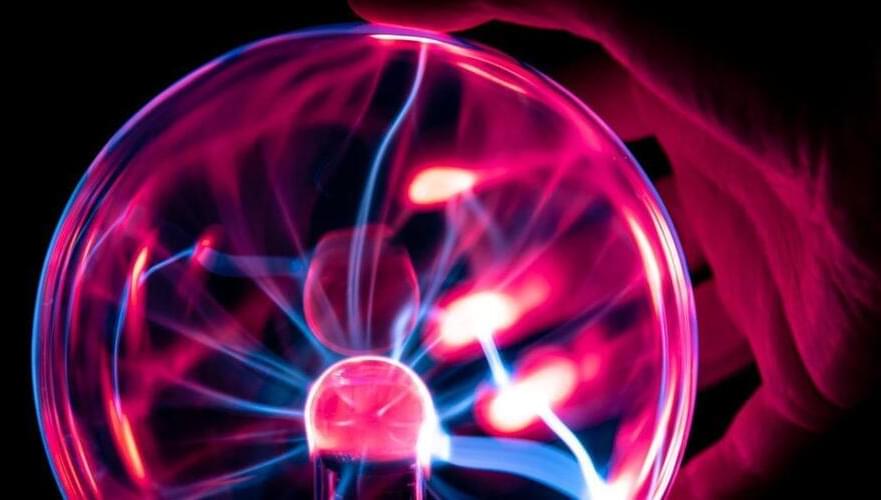You just need a fuel cell under your skin.



Materials that can conduct negatively charged hydrogen atoms in ambient conditions could pave the way for advanced clean energy storage and electrochemical conversion technologies. A research team from the Dalian Institute of Chemical Physics (DICP) of the Chinese Academy of Sciences (CAS) demonstrated a technique that enables a room-temperature all-solid-state hydride cell by introducing and exploiting defects in the lattice structure of rare earth hydrides. Their study was published in Nature on April 5.
Solid materials that conduct lithium, sodium and hydrogen cations have been used in batteries and fuel cells. Under certain conditions, some of the materials transition to superionic states where ions move as fast as they do in liquids by skipping through the rigid crystal structure. This phenomenon is advantageous for chemical and energy conversions as it allows ions to move without a liquid or soft membrane to separate the electrodes. However, few solid-state materials can reach this state under ambient conditions.
“Materials that exhibit superionic conduction at ambient conditions would provide huge opportunities for constructing brand new all-solid-state hydride batteries, fuel cells and electrochemical cells for the storage and conversion of clean energy,” said Prof. Chen Ping, study author from DICP.

The first observation of collider neutrinos at the LHC paves the way for exploring new physics scenarios.
Although neutrinos are produced abundantly in collisions at the Large Hadron Collider (LHC), until now no neutrinos produced in such a way had been detected. Within just nine months of the start of LHC Run 3 and the beginning of its measurement campaign, the FASER collaboration changed this picture by announcing its first observation of collider neutrinos at this year’s electroweak session of the Rencontres de Moriond. In particular, FASER observed muon neutrinos and candidate events of electron neutrinos. “Our statistical significance is roughly 16 sigma, far exceeding 5 sigma, the threshold for a discovery in particle physics,” explains FASER’s co-spokesperson Jamie Boyd.
In addition to its observation of neutrinos at a particle collider, FASER presented results on searches for dark photons. With a null result, the collaboration was able to set limits on previously unexplored parameter space and began to exclude regions motivated by dark matter. FASER aims to collect up to ten times more data over the coming years, allowing more searches and neutrino measurements.

To say that the formation of the earliest galaxies a few hundred million years after the Big Bang was a momentous occasion is an understatement. Since astronomers first proposed they were their own “island universes” a century ago, the line of galaxies we have been able to detect has been pushed further and further away and further and further back into the history of the universe—all the way back to the first era of the emergence of galaxies.
This week, a new candidate for the earliest galaxy — and the earliest to be confirmed spectroscopically — has been identified, dubbed JADES-GS-Z13-0. It formed just 320 million years after the Big Bang, when the intergalactic medium was still made up of murky, neutral hydrogen. A pair of studies published this week in Nature give a peek at not just the most distant galaxy yet discovered, but the processes that have shaped matter in the Universe ever since.
The four distant galaxies were discovered as part of a collaboration between two teams using two different instruments on JWST. Beginning in the early 2000s, the Great Observatories Origins Deep Surveyor (GOODS) used the Hubble and Spitzer Space Telescopes along with the Chandra and Newton X-ray Observatories and various ground-based telescopes to image two sections of the sky as deeply as possible.
Artificial Intelligence is here to stay. How it is being applied—and, perhaps more importantly, regulated—are now the crucial questions to ask. Walter Isaacson speaks with former Google CEO Eric Schmidt about A.I.’s impact on life, politics, and warfare, as well as what can be done to keep it under control.
Originally aired on March 23, 2023.
Major support for Amanpour and Company is provided by the Anderson Family Charitable Fund, Sue and Edgar Wachenheim, III, Candace King Weir, Jim Attwood and Leslie Williams, Mark J. Blechner, Bernard and Denise Schwartz, Koo and Patricia Yuen, the Leila and Mickey Straus Family Charitable Trust, Barbara Hope Zuckerberg, Jeffrey Katz and Beth Rogers, the Filomen M. D’Agostino Foundation and Mutual of America.
For more from Amanpour and Company, including full episodes, click here: https://to.pbs.org/2NBFpjf.

Obstructive sleep apnea (OSA) is a sleep disorder that affects millions of people worldwide.
It occurs when the throat muscles of a person relax and block the airflow into the lungs during sleep.
OSA can cause symptoms such as loud snoring, restless sleep, daytime sleepiness, and morning headaches, which can be debilitating for both the patient and their partner.

IN THE NEAR FUTURE, we should anticipate certain technological developments that will forever change our world. For instance, today’s text-based ChatGPT will evolve to give rise to personal “conversational AI” assistants installed in smart glasses and contact lenses that will gradually phase out smartphones. Technological advances in fields such as AI, AR/VR, bionics, and cybernetics, will eventually lead to “generative AI”-powered immersive neurotechnology that enables you to create virtual environments and holographic messages directly from your thoughts, with your imagination serving as the “prompt engineer.” What will happen when everyone constantly broadcasts their mind?
#SelfTranscendence #metaverse #ConversationalAI #GenerativeAI #ChatGPT #SimulationSingularity #SyntellectEmergence #GlobalMind #MindUploading #CyberneticImmortality #SimulatedMultiverse #TeleologicalEvolution #ExperientialRealism #ConsciousMind
Can the pursuit of experience lead to true enlightenment? Are we edging towards Experiential Nirvana on a civilizational level despite certain turbulent events?

There is a new catchphrase that some are using when it comes to talking about today’s generative AI. I am loath to repeat the phrase, but the angst in doing so is worth the chances of trying to curtail the usage going forward.
Are you ready?
Some have been saying that generative AI such as ChatGPT is so-called alien intelligence. Hogwash. This kind of phrasing has to be stopped. Here’s the reasons to do so.

Has AI advanced too far and too fast? Does it represent an out-of-control threat to humanity? Some credible observers believe AI may have reached a tipping point, and that if research on the technology continues unchecked, AI could spin out of control and become dangerous.
This article explores how Google responded to ChatGPT by using foundation models and generative AI to create innovative products and improve its existing offerings. It also examines Google’s use of Safe AI when creating new products.
“Moreover, in all of these tasks, GPT-4’s performance is strikingly close to human-level performance, and often vastly surpasses prior models such as ChatGPT. Given the breadth and depth of GPT-4’s capabilities, we believe that it could reasonably be viewed as an early (yet still incomplete) version of an artificial general intelligence (AGI) system.”
We are indeed living in “interesting” times.
Paul Smith-Goodson is the Vice President and Principal Analyst covering AI and quantum for Moor Insights & Strategy. He is currently working on several research projects, one of which is a unique method of using machine learning for highly accurate prediction of real-time and future global propagation of HF radio signals.

Each project will get up to $600,000 over two years to continue developing the concepts.
National Aeronautics and Space Administration’s (NASA) Innovative Advanced Concepts program has chosen six research teams to receive Phase II funds.
“NASA’s story is one of [the] barriers broken, and technologies transformed to support our missions and benefit all of humanity,” said NASA Administrator Bill Nelson.
Christopher Morrison/NASA
These initiatives include a scheme to allow astronauts to manufacture their own medications in orbit and a plan to eliminate asteroids that pose a hazard to Earth, according to a press release by the U.S. Space Agency.